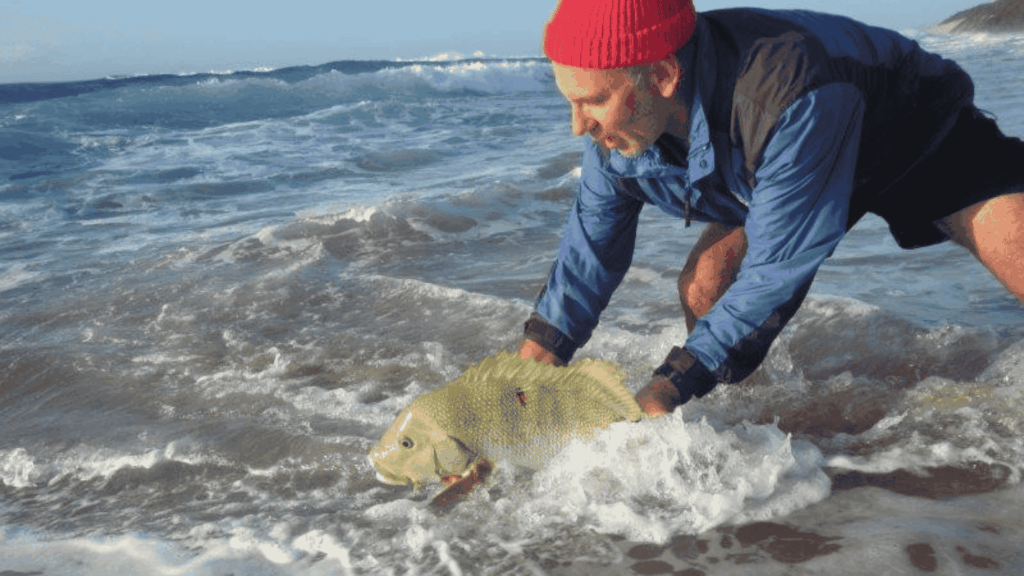As marine life rapidly declines, urgent action is needed to protect marine life and its habitats and ensure healthy ecosystems and marine survival. The establishment of marine reserves (MPAs) is one way this can be achieved, with fish species research showing significant improvements. In the accumulation of celebrations for MPA Day on August 1, a passionate South African scientist shared his findings showing the value of these “sea nature reserves.”
“MPA offers many benefits for both marine health and human activity,” explained Dr. Bruce Mann, a researcher at the Institute of Oceanography in Durban. “One advantage is that fish stocks allow for increased abundance and biomass, allowing them to spill over time into adjacent areas of fish, improving catches and ensuring sustainability of the fisheries.”
He said the pristine quality of these essential conservation areas gives us a clear idea of what nature looks like when it is not influenced by humans. “This forms a useful 'control' that provides a solid foundation for the study of nature and the necessary protective techniques.
Three examples of SA's east coast MPA profits
1. Scottish
For 16 years, Dr. Mann and his team have been studying the Pondland MPA in the Eastern Cape. They tagged and released 1,042 Scottish Seabreams, recaptured 255 (24%). Most (85%) stayed within small home ranges in MPA reefs and demonstrated the effectiveness of the No Take Zone in protecting residents' fish. The remaining (15%) traveled northeast along the KZN coast and was likely to spawn, and later caught by recreational and commercial ski boat fishermen, highlighting how the MPA supports both conservation and local fisheries.
Read the research: https://doi.org/10.1080/15627020.2023.2170717
2. Giant Kingfish
To track the giant Kingfish (GTS), Dr. Mann was part of a team that tagged 36 adult fish with acoustic tags along the coast from South Mozambique to the Eastern Cape for five years. The findings were notable. All kingfishers visited the spawning site in Maputo National Park (MPA) during the full moon between November and January each year. After spawning, they returned to many residential areas within the MPA along the KZN and the Eastern Cape coast. Therefore, GTS relies on MPA for survival and if you want to continue catching this iconic species in the future, you will need to take care of MPA.
Read the research: https://doi.org/10.3354/meps14512
3. Ishimangariso MPA
Will Catch and Release (C&R) help you save money on coastal fishing species? A 20-year study at the Isimangalico MPA tested this by tagging fish caught by volunteer anglers in the zone area within the MPA. The findings showed that when best practice treatments were used, C&R angles have minimal impact on most species, but more sensitive species exhibit higher post-release mortality rates, especially as fishing pressure increases. This study concluded that C&R is not suitable for strict no-take zones, but provides actual conservation value as a buffer around the MPA or in specially zoned areas.
Read the research: https://doi.org/10.1016/j.fishres.2018.07.021
A fun fact!
In 1989, a red Steen Brass called Uncle Robert was caught and tagged by Dr. Bruce Mann (who was a student at the time) of the 75cm Tsitsikamma MPA. In 2011, 22 years later, the ski boat fisherman caught Uncle Robert near Camart, who was 5cm tall at the time, and shared information with Dr. Mann. Another Red Steenbras, also tagged with the Tsitsikamma MPA, Aunt Rachel, was recaptured in the Aliwal Shoal MPA, a record of 923km!
MPA Day Activities
By participating in the MPA Day celebration on August 1, 2025, we will support the work being done to protect your MPA. This year's activities aim to connect people to the ocean and bring a sense of protection to even more people around the world.
Visit MPA Day for updated events and activities and take part in all MPA Day 2025 actions. Join us in discussions about MPA on Instagram @MarineProtectedAreassa, Facebook @Mpasouthafrica, or LinkedIn MPA Day: Overview | LinkedIn. Watch MPA day videos on YouTube.
For more information about many MPA day partners, please visit www.mpaday.org.
For industry-related news, click here.


